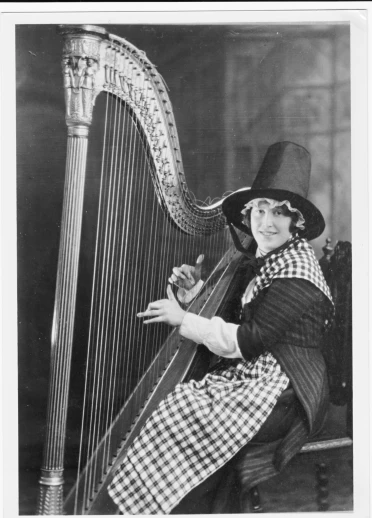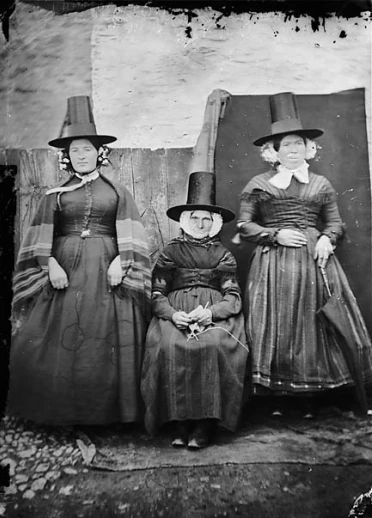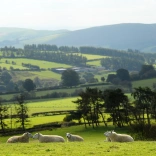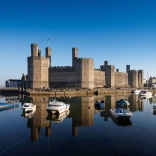Some looks are simply iconic: Marilyn Monroe’s flowing white frock, James Bond in his freshly-pressed suit, and, of course, the traditional Welsh lady in a tall black hat and red woollen shawl.
While you’d be hard pressed to find anyone sporting a bedgown on the streets of Cardiff these days, Wales’ national costume remains an important part of our heritage, and is proudly donned by thousands of school children each year during the celebration of our patron saint, St David’s Day. But where exactly did it come from?
Welsh national dress - the style
The outfit that is today considered to be the national dress of Wales is based on the clothing worn by working women living in rural areas of the country during the 19th century.
Its most recognisable component is the tall black hat, which appears like an elongated version of a traditional bowler hat. The eye-catching garment has become so entrenched in Welsh historical identity that it is known today simply as a "Welsh hat". Unlike other aspects of the national outfit, it was worn only in Wales – though exactly how it became a fashion trend during the 19th century continues to baffle historians.
This distinctive choice of headwear is typically paired with a shawl worn around the shoulders, and a Pais a Betgwn - a puffy, petticoat-like skirt (in Welsh, the pais), and a gown (also known as a bedgown - or Betgwn - spelt in multiple ways in Welsh, but this is the most common current spelling). The gown can vary in style from long and fitted to short and loose, but always opens at the front.
Additional elements of the outfit include a cotton or linen mob cap, plus an apron and stockings, which, in modern renderings of the costume, tend to be white. A woollen cloak is also usually considered part of the ensemble, worn draped around the shoulders.


Did Welsh people really dress like this?
Though the costume is inspired by 19th-century rural Welsh dress, styles ebbed and flowed throughout this period – the Welsh hat, for example, did not arrive until the 1840s – making the costume we know today more an amalgamation of various styles than an accurate depiction of an outfit worn during one particular moment in history.
Additionally, there was also not one singular style of dress throughout Wales, as Michael David Freeman, a former curator of Ceredigion Museum, who also runs a website dedicated to Welsh traditional dress, explains.
'Though most items in the outfit were found across Wales, and further afield, there were regional variations, especially in the gown and bedgown,' says Michael.
'The most distinctive feature of most Welsh costume is that it was made of local wool, rather than cotton,' he adds.
Today, versions of the classic outfit tends to be predominantly red, a colour strongly associated with Wales, due in part to y ddraig goch (the red dragon) that adorns our national flag. However, the 19th-century iterations of the clothing items were more commonly blue, according to contemporary accounts and paintings. The most popular shawls of the time, meanwhile, bore a paisley pattern, which originated from Kashmir in India.
How the outfit was popularised
During the late-19th century there were growing fears in Wales over a perceived loss of national identity, and it was believed that, along with the promotion of the Welsh language, the creation of an identifiable ‘national outfit’ could go someway to remedying this issue. Though bedgowns and tall hats were no longer in vogue by this time, the outfit’s former prominence throughout the country, and its presence in paintings, made it a strong candidate for the cause. It also brought other benefits, as Michael David Freeman explains.
'By the 1870s there was an interest in preserving Welsh language and culture and some gentry middling classes took an interest in wearing it at special events. This was also partly to support the Welsh woollen industry,' says Michael.
One of those who supported the idea of a national dress for Wales was Augusta Hall, a patriotic and wealthy heiress to the Llanover estate in Monmouthshire. Lady Llanover is said to have encouraged her friends and staff to wear the traditional Welsh outfit, and also won an Eisteddfod competition (an annual Welsh festival of music and poetry) in 1834 with a set essay on the benefits of preserving the Welsh language and national costumes of Wales – an award she accepted sporting traditional Welsh dress.
The arrival of mass tourism to Wales during this period also cemented the outfit as part of Welsh culture. The outfit featured on souvenir china, prints, and countless postcards from that time, stereotyping it as the official look of the country. It was this development, perhaps more than any, that sealed the costume into the identity of Wales, and has ensured you’ll still see the black hats and woollen shawls during St David’s Day celebrations in Wales every 1 March.
More information:
Sublime Wales (site run by Michael David Freeman, researching comments on the material culture of Wales by tourists to Wales, 1700-1900)
St Fagans National Museum of History (part of Amgueddfa Cymru)




